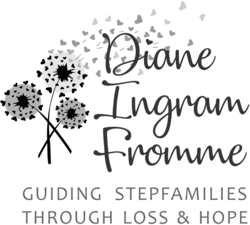from Chapter 6: The Lifework of Grief
Grief is enduring. It resurfaces from time to time like a bottle in the ocean. On the ninth anniversary of his mother’s death, my stepson did not come home from junior high school. A familiar shoe on a sidewalk just outside our neighborhood yielded a clue, and near dark Brian found his son walking barefoot on the prairie open-space, which is dedicated in his mother’s name. He told his dad he’d had a bad day but did not consciously realize that it was his mother’s death date. Episodes like this raise the question: How do kids grieve? And what do they need along the way?
Grief is a process, not an event
Loss is an event that changes the way things have been. Grief is how people feel internally as a result of the loss. Grief is a complicated emotional experience. According to Earl Hipp, author of Help for the Hard Times, “Part of the reason grief is so complicated is that you have so many feelings that change so quickly.” Mourning is described as the external, or shared, social response to the loss, such as crying, acting out, journaling, etc.
Grief is not linear. It is not a set of stages in sequence, nor is it orderly and predictable. Professionals agree that the process of grieving is most healthy when families address these four tasks of mourning, in no particular order:
- Accepting, not denying, that a loss has occurred, and seeking ways to understand the death
- Taking time to experience the grief and pain
- Memorializing the dead person and giving them a continued place, thereby relocating the emotional energy you gave them
- Learning how to go on living without the dead person
Children in particular need support from the entire family to grieve in a healthy way. They don’t know how to work it out on their own.
